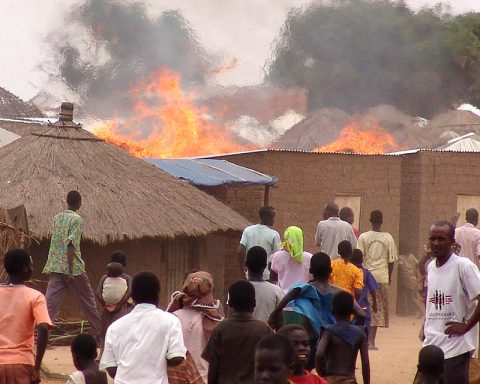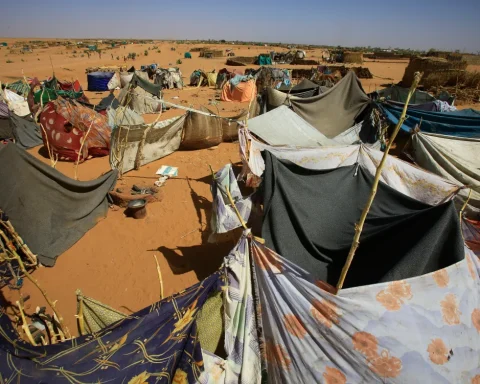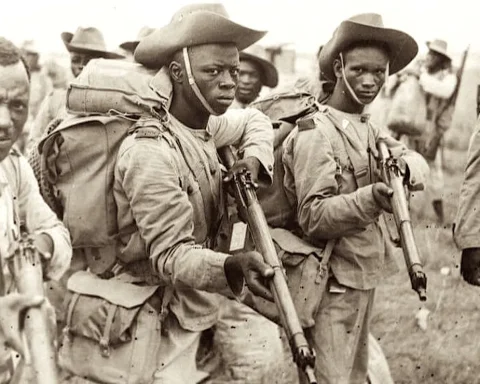Pol Pot commanded the Khmer Rouge administration in Cambodia, which is now regarded as one of the scariest periods in modern history. Over 1.7 million people are thought to have died as a result of the unspeakable agony this ruthless regime inflicted upon the people of Cambodia between 1975 and 1979. The Khmer Rouge used systematic hunger, forced labor, and executions to try and mold Cambodian society into their twisted idea of an agrarian utopia. This page explores the horrific past of the Khmer Rouge, the horrors they perpetrated, and their long-lasting effects on the people and country of Cambodia.
The Rise to Power:
The Khmer Rouge, originally a communist guerrilla movement, gained prominence in the 1960s amid Cambodia’s political instability and the Vietnam War. Led by Pol Pot, whose real name was Saloth Sar, the Khmer Rouge aimed to overthrow the US-backed government of Lon Nol. In April 1975, after years of fighting, the Khmer Rouge seized control of Cambodia’s capital, Phnom Penh, marking the beginning of their reign of terror.
The Reign of Terror:
Once in power, the Khmer Rouge implemented radical and brutal policies to achieve their vision of an agrarian communist society. They forcibly evacuated urban areas, including Phnom Penh, emptying cities and relocating millions of people to rural agricultural labor camps. Families were torn apart, and individuals were stripped of their possessions and identities.
Under the guise of creating an egalitarian society, the Khmer Rouge abolished currency, private property, religion, and traditional cultural practices. Intellectuals, professionals, religious leaders, and anyone perceived as a threat to the regime were targeted for execution. Schools, universities, and Buddhist temples were destroyed as the regime sought to eradicate all traces of Cambodia’s past.
Forced Labor and Starvation:
Central to the Khmer Rouge’s ideology was the belief in the superiority of agrarian life. They envisioned a society built upon peasant labor, with a focus on rice cultivation. However, the regime’s agricultural policies were deeply flawed and driven by coercion rather than practicality.
Cambodians toiled in labor camps under inhumane conditions, working long hours with little food or rest. Malnutrition and disease ran rampant, exacerbated by the regime’s neglect of basic healthcare and sanitation. Those who faltered or resisted faced punishment, torture, or execution.
The Khmer Rouge’s mismanagement of agriculture and forced collectivization led to widespread famine and starvation. Food production plummeted, and the population suffered from acute food shortages. The regime callously prioritized the needs of its cadres over the welfare of the people, leading to countless deaths from hunger and disease.
The Killing Fields:
Perhaps the most notorious aspect of the Khmer Rouge’s rule was the systematic extermination of perceived enemies and dissenters. The regime operated a network of prisons, torture centers, and execution sites known as the “Killing Fields.” Here, countless innocent men, women, and children were subjected to unimaginable horrors before being mercilessly killed and buried in mass graves.
Victims included intellectuals, professionals, government officials, ethnic minorities, and even former Khmer Rouge cadres suspected of disloyalty. Methods of execution varied from shooting and bludgeoning to starvation and forced labor until death. The Khmer Rouge’s paranoia and brutality knew no bounds as they ruthlessly eliminated anyone deemed a threat to their power.
The End of the Nightmare:
The reign of the Khmer Rouge finally came to an end in January 1979 when Vietnamese forces, backed by Cambodian exiles, overthrew Pol Pot’s regime. The surviving Khmer Rouge leaders fled to the jungles, where they continued to wage a guerrilla insurgency against the new Vietnamese-backed government.
Despite their defeat, the legacy of the Khmer Rouge continued to haunt Cambodia for decades to come. The country was left scarred by the trauma of genocide, widespread devastation, and a lost generation of intellectuals and professionals. The process of rebuilding and healing would be long and arduous, with lasting psychological, social, and economic repercussions.
Justice and Reconciliation:
In the aftermath of the Khmer Rouge era, Cambodia faced the challenge of reckoning with its traumatic past while striving for justice and reconciliation. Efforts to hold Khmer Rouge leaders accountable for their crimes culminated in the establishment of the Extraordinary Chambers in the Courts of Cambodia (ECCC), also known as the Khmer Rouge Tribunal.
Since its inception in 2006, the ECCC has prosecuted several senior Khmer Rouge leaders, including Nuon Chea and Khieu Samphan, for crimes against humanity, war crimes, and genocide. While providing some measure of justice for the victims and their families, the tribunal has also sparked debates over its effectiveness, delays, and limitations.
Moreover, Cambodia continues to grapple with the legacies of genocide and trauma, as survivors and their descendants seek healing and closure. Memorials such as the Tuol Sleng Genocide Museum and the Choeung Ek Killing Fields serve as poignant reminders of the atrocities committed by the Khmer Rouge, ensuring that the horrors of the past are never forgotten.
Conclusion:
The Khmer Rouge regime in Cambodia represents a dark and tragic chapter in human history, characterized by brutality, suffering, and loss on a staggering scale. The legacy of Pol Pot’s reign of terror continues to reverberate through Cambodian society, shaping its politics, culture, and collective memory.
While Cambodia has made strides in rebuilding and moving forward, the scars of the past remain visible, reminding us of the importance of confronting and condemning atrocities wherever they occur. The story of the Khmer Rouge serves as a solemn reminder of the fragility of human rights, the dangers of ideological extremism, and the resilience of the human spirit in the face of unimaginable adversity.





